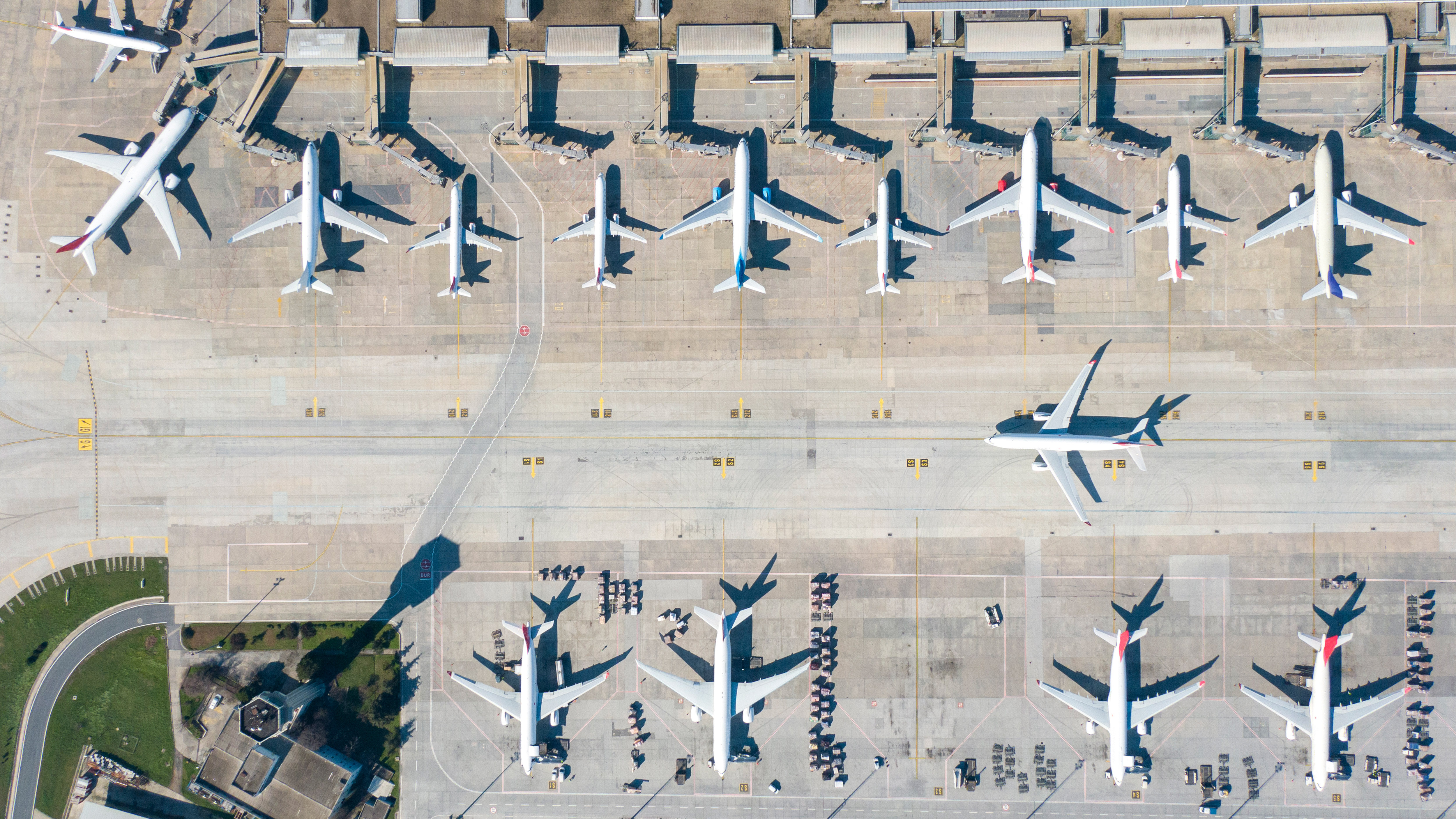Many things have already been digitalized at airports, including e-tickets, baggage claim, digital payments, and online check-in. Just think: You can check in from the comfort of your own home, at the hotel, or a digital kiosk at the airport. And when it’s time to board, scanners read your boarding pass information. Similarly, passport control uses artificial intelligence (AI) to verify your passport photo. Despite all of this, airports are still a long way from Airport 4.0 or, in other words, digitally integrating and automating their processes. Although the road to Airport 4.0 began in the 1990s, a lot of key processes are still carried out manually in many airports. Yet digital infrastructure can reduce costs and offer passengers new digital options for greater convenience.
Airports are hungry for new technologies
Airports are complex environments where everything has to run smoothly, safely, and with all the comfort passengers expect. Lots of people come together in a very limited space, including retailers, restaurant operators, ground staff, customs, border guards, and of course passengers. Digitally integrating systems and processes is therefore the best way to not only ensure everything runs like clockwork but also increase resilience and improve quality for everyone involved. Two great examples are the fully automated parking robot at Düsseldorf Airport and the scanner carpet at Geneva Airport, which tells you whether you have to take off your shoes when going through security. [1] These examples show that work is already being done to find solutions to improve convenience and make operations more efficient. But all of the solutions need to work together seamlessly, which also means they need to be connected. That’s why it’s essential to rely on intelligent solutions. A global survey reveals that 43% of airports surveyed would like to include 5G communication networks in their main digitalization program by 2025, and 29% would like to use artificial intelligence. [2]
Digital transformation with fully automated processes
ERP systems are an important step in any airport’s digital transformation. For example, the Microsoft MS 365 Dynamics ERP system automates core processes such as accounts receivable, collections, inventory, and procurement management while also digitalizing the flow of information within the company. In addition to ERP systems, any effective digital transformation strategy for airports also includes setting up highly available IT infrastructure and implementing specialized systems, including the Airport Operations Management System (AOMS), Flight Information Display Systems (FIDS), Resource Management Systems (RMS), and an integrated Airport Operation Control Center (AOCC). It’s also essential that the main operations management system goes digital. This ensures that airports convert their paper-based processes to the latest IT solutions, which not only help them modernize but also provide more convenience for both passengers and employees.
Let’s take a look at Europe: Sofia Airport in Bulgaria is introducing an enterprise resource planning system (ERP) together with Greek company Hellenic Telecommunications Organization (OTE) as part of its digital transformation. This will automate some of the airport’s core processes that were previously done manually. These include operational and financial processes within the company and with customers as well as contractors, such as goods deliveries, order processing, cash payments, and more. Modern ERP systems, like the one being implemented at Sofia Airport, are delivered via the cloud and use the latest technologies such as AI and machine learning to improve both efficiency and productivity.
Maximum performance and security with 5G campus networks
Another great example of digital transformation is Athens Airport in Greece. Whether it’s transferring huge amounts of data in the blink of an eye or protecting sensitive data from cyber threats, Greece’s first 5G campus network at Athens International Airport offers comprehensive incident management and maximum security. The private 5G network installed by COSMOTE (part of OTE) enables, for example, high-definition videos of “follow-me” vehicles to be transmitted in real time and with zero delay.
5G campus networks offer several advantages and innovative solutions for digital infrastructure. The technology is designed to be used in a closed ecosystem and allows companies to create their own communication ecosystems that are both incredibly reliable and secure. This makes a 5G campus network the perfect choice when it comes to stability and security. The latter is naturally hugely important in an airport environment. But reliable and stable data transmission—at lightning-fast speeds and very high capacity without delays—is also essential for mission-critical applications, such as those at an airport.
Summary
Whether it’s a 5G campus network, the Internet of Things (IoT), digitalizing processes, or new technologies like AI or augmented reality (AR)—the path to Airport 4.0, i.e. the digitalization of nearly all processes, not only offers a wide range of benefits for airports, but also has a positive impact on the experience of passengers, visitors, and companies. Telekom Business Europe and our local experts in Central and Eastern Europe are here to help you find the right solution. We provide a helping hand in building your digital infrastructure—ready for your business to take off.
